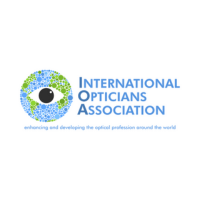General News
Motorists with “dangerously poor vision” putting lives at risk
Motorists with “dangerously poor vision” putting lives at risk this Christmas
An estimated 17 million[i] motorists will take to the road on each of the days leading up to Christmas to visit loved ones – yet as many as one in 10 could be driving with vision that doesn’t meet the legal standard
In a survey of 1033 UK optometrists, nearly half said they have seen a patient in the last month who continued to drive despite being told their vision was below the legal standard
- Every year an estimated 3000 people are injured or killed by a driver with poor vision
Emma Damen, whose father Jim Tassell, was killed by a driver with poor eyesight, is supporting the AOP’s call for motorists to face compulsory vision testing
- One in 10 Britons say they would continue to drive as normal even if their vision was deemed unsafe
- As the Association of Optometrists’ Don’t swerve a sight test public campaign reaches a five-year milestone, the Association calls for an urgent change to a law that fails to prevent injuries and fatalities on Britons roads and is the most lax in Europe
Motorists are putting lives at risk this Christmas, with research showing drivers are not taking advice about their vision from eye experts. Almost half (45%) of optometrists[ii] in the UK have seen a patient in the last month who continued to drive despite being told their vision falls below the legal standard, research by the Association of Optometrists (AOP) reveals. The Association is calling for the law to be changed to provide the public with protection that is the standard across Europe.
The findings come in a year that saw a series of high-profile road collisions resulting from drivers who are shown to have poor eyesight.
Emma Damen, whose father, Jim Tassell, was killed by a driver with vision below the legal standard for driving, said: “My dad’s death should never have happened. When you get to 70 and renew your licence, you should have to prove your eyesight is good enough to drive”. Ms Damen stressed the onus on Government to protect the public “How many more have to die before the Government say ‘enough is enough’ and put a new law in place?”.
Currently, an estimated 2900 people are injured or killed by a driver with poor vision[iii] yet the Government has failed to act.
A public poll for the AOP confirms that two-thirds (62%) of people are currently “putting off” a sight test and 36% are relying on an out-of-date prescription. Nearly a fifth (17%) of drivers admitting they have never self-checked their own vision by reading a number plate as recommended by the DVLA[iv].
Under existing UK law, drivers undergo an initial number plate test when taking a driving test, then complete a self-declaration for renewing their licence thereafter. These laws are among the most lax in Europe – with most countries requiring that visual checks are carried out at regular intervals and with an eye care professional.
The AOP is calling for a change to the law that would require drivers to have a comprehensive vision check to prove their vision meets the legal standard when they first apply for the licence and then every 10 years thereafter, or more frequently after the age of 70.
As part of the Don’t swerve a sight test campaign, Chief Executive of the Association of Optometrists, Adam Sampson wrote to the DVLA urging action on calls that have been left unanswered for five years, despite the risk it poses to all road users and not just the drivers themselves.
Mr Sampson said: “It’s deeply concerning that a 17-year-old who can read a number plate from 20 metres away when they take their driving test, may continue to drive with no further checks for the rest of their life. We have to ask ourselves why the UK system, which relies on self-reporting and a number plate test, continues to operate under a law first introduced in 1937 to the detriment of an individuals’ safety.”
The campaign also reminds drivers that undergoing a sight test every two years is currently the best way to protect eye health and make sure they are road safe.
Mr Sampson added: “Sight loss can often be gradual, and people may not notice changes that could affect their ability to drive so it’s important to remember that regular vision checks are an essential part of helping to stay safe as a driver.”
In a public poll of 2000 people, around half (47 per cent) agreed the laws on vision for driving should be more rigorous. Of those who want more rigorous laws, half (49 per cent) also believed a compulsory sight test should be part of a licence being granted and a quarter (26 per cent) wanted motorists to have a sight test at least every 10 years.[v][1]
Members of the public and optometry profession can contact their MP to support the AOP’s call for a change to the law, with more information available on the AOP website.
i] AA survey of 12,000 motorists, December 2022
[ii] Findings from 1033 practising optometrists, November 2022. The Voice of Optometry panel was set up in 2017.
[iii] Fit to Drive: a cost benefit analysis of more frequent eyesight testing for UK drivers by RSA Insurance Group plc, 2012.
[iv] DVLA – Driving Eyesight Rules
[v] Mortar Research polled 2001 people on behalf of the AOP in October 2018. Of the 2001 surveyed, 1386 were car owners who drive regularly.
























